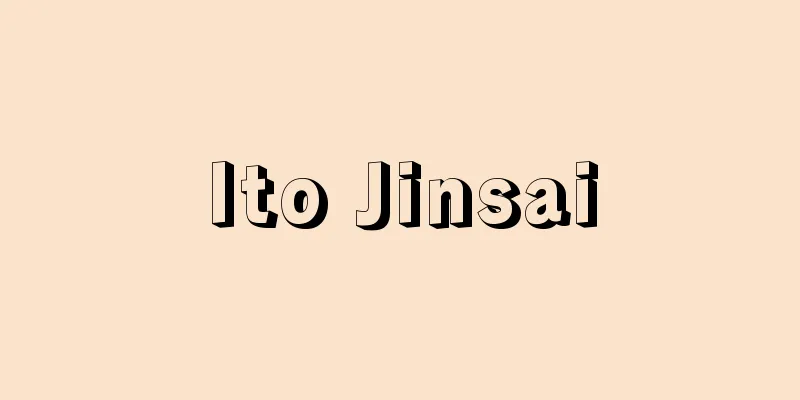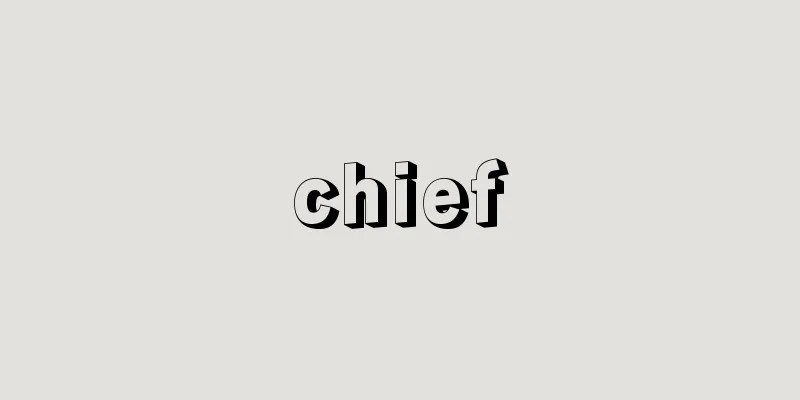Ito Jinsai

|
A thinker of the early Edo period. Born on July 20, 1626, north of Horikawa-dori Kageyukoji in Kyoto. His childhood name was Genshichi, his pen name was Gensuke, and his given name was Koreeda. His grandfather, Tsuruya Shichiroemon, made his fortune as a merchant (the type of business is unknown), studied linked poetry under Satomura Joha and Genchu (1576/1578-1638), and practiced Zen under Taike and Icchu at Myoshinji Temple. His father, the second son, started a separate family and called himself Tsuruya Shichiemon. His mother, Nabe's father was Satomura Genchu, a renga poet of the shogunate, and his mother was the daughter of Yoshida Yoshidaan, a physician of the Suminokura clan. Nabe's sisters married doctors and lacquer artists who frequented the imperial court, and Jinsai himself later married a woman from the Ogata family, who were close relatives of the Honami family. Jinsai grew up under the spiritual influence of wealthy Kyoto townspeople on his father's side who valued culture and leisure, and of upper-class Kyoto intellectuals on his mother's side. He disliked being a physician, and aspired to become a Confucian scholar, against the wishes of his family. In his youth, he studied the works of Zhu Xi (Zhu Xi) on his own, and was so absorbed in his Keisaishin that he took the name Keisai. In 1655 (Meireki 1, age 29), he retired to Matsushita-cho, where he left Yangmingism for the teachings of Butsurou, studied the White Bone Contemplation method, and believed that interpersonal morality (the way of human ethics) was shallow and not worth discussing. However, three years later, in 1658 (Manji 1), he wrote Jin-setsu, in which he argued that the essence of benevolence is love, and changed his pen name to Jinsai. In 1662 (Kanbun 2), at the age of 36, he returned home, took on the name Tsuruya Shichiemon, and opened the Kogido school. He remained a town scholar for the rest of his life, and did not respond to invitations from feudal lords. He died on March 12, 2nd year of the Hoei era, at the age of 79. Jinsai created social gatherings (salons) where he enjoyed culture and education with Kyoto nobles, specialists, and distinguished people from the Neoi region, centering on his peer meetings at the school, and in that atmosphere he perfected his study of ancient theology. He read and pondered the two books, "The Analects" and "Mencius" directly, without relying on later commentaries, and after mastering the ways of thinking and writing of Confucius and Mencius, he correctly understood the meaning of the words and attempted to grasp the essence of Confucius and Mencius' thought. He called "The Analects" "the supreme and ultimate book in the universe," "Mencius" a commentary on "The Analects," said that "The Great Learning" was not Confucius' last written work, that the last few chapters of "The Doctrine of the Mean" were miscellaneous notes of the Han Confucians, and that the first half of the book was consistent with the spirit of "The Analects." However, Jinsai was more of a thinker than a scholar. His method of reading the Analects and Mencius using his own life as a footnote and trying to understand the spirit of Confucius and Mencius, imprinted the stamp of time, place and man on his learning. He rejected the mindset of protecting the social order (righteousness) and the mindset of returning to the ruler of that order (respect) as preached in Neo-Confucianism, and instead valued emotional benevolence that creates a state of oneness between self and others beyond social differences. For Jinsai, the sage was the greatest cultural figure in the universe who filled the world with love, and his ideal paradise, the King's Paradise, was a utopia without politics and power. Jinsai used his experience of the social gatherings of Kyoto in the Genroku period as a filter to remove feudalism and politics from Confucianism, which was a feudal ethical political science, and instead gave it humanity and sociability, transforming Confucianism into a science of social ethics. Jinsai rejected Zhu Xi's dualism of Li and Qi and advocated a monistic view of Qi. He himself, if forced to say, would adopt a monistic view of Qi, but said it is better not to think about anything beyond our everyday experiences. This attitude influenced the Koiho (traditional medical method). Goto Konzan and Kagawa Shuan (1683-1755) looked for the cause of illness in the stagnation of vitality, and Yoshimasu Toudou looked for the cause in the location of a poison, but it is thought that this influenced their stance of empirical proof, believing that it is not necessary to delve into the nature of vitality and poison. Jinsai had four sons, Togai, Baiu (1683-1745), Kaitei (1687-1772), and Rangu, who inherited the family teachings, but Jinsai's own books include "Go Men Zigi", "Douji Mon", "Daigaku Teishohon", "Zhong Dok Kaihatsu", "Kogi of the Analects", "Kogi of Mencius", "Kogi of the Ancient Learning Teachers", and others, many of which were published by Togai after his death. Jinsai's grave is at Nison-in Temple in Rakusei. [Kazura Ishida April 18, 2016] "The Scholarship and Education of Ito Jinsai" by Kato Nihei (1940, Meguro Shoten / Reprint edition, 1979, Daiichi Shobo)" ▽ "Ito Jinsai" by Ishida Ichiro (included in "Japanese Cultural Studies Volume 5", 1959, Shinchosha)" ▽ "Ito Jinsai" by Ishida Ichiro (1960 / New edition, 1989, Yoshikawa Kobunkan)" ▽ "Japanese Thought Series 33: Ito Jinsai and Ito Togai" (1971, Iwanami Shoten) [Reference items] | | | | |Volume 1, by Ito Jinsai, published in 1705 (2nd year of the Hoei period), held at the National Diet Library "Yu Meng Literal Meaning" Source: Shogakukan Encyclopedia Nipponica About Encyclopedia Nipponica Information | Legend |
|
江戸前期の思想家。寛永(かんえい)4年7月20日、京都堀川通勘解由小路(ほりかわどおりかげゆこうじ)北に生まれる。幼名は源七、字(あざな)は源佐(げんすけ)、名は維楨(これえだ)。祖父の鶴屋(つるや)七郎右衛門は商(あきない)(何商か不明)で財をなし、里村紹巴(さとむらじょうは)・玄仲(げんちゅう)(1576/1578―1638)に連歌(れんが)を学び、妙心寺の大化(たいけ)・一冲(いっちゅう)に参禅した。父は次男で別家して鶴屋七右衛門を称した。母の那倍(なべ)の父は幕府の連歌師里村玄仲、母は角倉(すみのくら)一族の医師吉田易安(よしだいあん)の娘。那倍の姉妹は宮廷出入りの医師や蒔絵(まきえ)師に嫁いでおり、仁斎自身ものちに本阿弥(ほんあみ)家と近親の尾形家から妻を迎えている。仁斎は、父方からは教養と閑暇を尊ぶ京都の富裕な町人の、母方からは京都の上流文化人の精神的影響を受けて育った。彼は家人の願いに反して医師を嫌い、儒学者を志した。青年時代には独学で朱子(しゅし)(朱熹(しゅき))の書を読み、その『敬斎箴(けいさいしん)』に傾倒して敬斎と号し、さらに1655年(明暦1。29歳)には松下町に隠棲(いんせい)して陽明学から仏老の教えに入り、白骨観法を修め、対人道徳(人倫の道)は浅薄でいうに足らぬと考えた。しかし3年後の1658年(万治1)に『仁説』を書いて、仁の本質は愛であるといい、号を仁斎と改めた。1662年(寛文2)36歳のとき家に帰って鶴屋七右衛門を襲名するとともに「古義堂」塾を開き、終生町(まち)学者となって諸侯の招きに応じなかった。宝永(ほうえい)2年3月12日79歳で没した。 仁斎は塾における同志的会合を中心に、京都の公卿(くげ)、専門文化人、根生(ねおい)の分限者たちと文化的教養を楽しむ社交会(サロン)をつくり、その雰囲気のなかで古義学を大成していった。彼は『論語』『孟子(もうし)』2書を後人の注釈によらず直接に熟読精思して、孔子・孟子の思考方法、文章の作り方を会得したうえで、その字義を正しくとらえるとともに、孔孟の思想の真髄をつかもうとした。彼は『論語』を「最上至極宇宙第一書」、『孟子』を『論語』の義疏(ぎしょ)といい、『大学』は孔子の遺書ではない、『中庸(ちゅうよう)』の終わりの数章は漢儒の雑記、前半は『論語』の旨趣には合致すると説いた。しかし仁斎は学者よりは思想家であった。自分の「生活を脚注」として『論語』『孟子』を読み、孔孟の精神に迫ろうとする「古義学」的方法は、彼の学問に時と所と人の刻印を押すことになった。彼は、朱子学の説く社会の身分秩序を守る心(義)とその秩序の主宰者に帰向する心(敬)を退けて、社会成員が身分的相異を超えて自他不二の境地をつくる情意的な仁愛を尊んだ。仁斎にとって聖人はその愛を天下に満たす宇宙最大の文化人で、その理想郷の王道楽土は政治と権力のないユートピアであった。仁斎は、封建的倫理的政治学であった儒教から元禄(げんろく)京都の社交会の体験を濾過器(ろかき)として、封建性と政治性を取り去り、かわりに人類性と社交性を与えて、儒教を社交的倫理の学につくりかえたのである。 仁斎は朱子の理気二元論を排して気一元論を説いているが、自分はしいていえば気一元論をとるが、日常経験を超えた存在は考えないほうがよいと述べている。この態度は古医方(こいほう)に影響を与えた。後藤艮山(ごとうこんざん)、香川修庵(かがわしゅうあん)(1683―1755)が元気の溜滞(りゅうたい)に、吉益東洞(よしますとうどう)が一毒の所在に病因を求めながら、元気や毒のなんたるかは穿鑿(せんさく)に及ばぬと経験的実証の立場をとった態度に影響したと考えられる。 なお仁斎には東涯(とうがい)、梅宇(ばいう)(1683―1745)、介亭(かいてい)(1687―1772)、蘭嵎(らんぐう)の4男子がいて家学を継承したが、仁斎自身の著書としては『語孟字義』『童子問』『大学定本』『中庸発揮』『論語古義』『孟子古義』『古学先生文集・詩集』その他があり、その多くは没後東涯によって刊行された。仁斎の墓は洛西(らくせい)の二尊院(にそんいん)にある。 [石田一良 2016年4月18日] 『加藤仁平著『伊藤仁斎の学問と教育』(1940・目黒書店/復刻版・1979・第一書房)』▽『石田一良著「伊藤仁斎」(『日本文化研究 第5巻』所収・1959・新潮社)』▽『石田一良著『伊藤仁斎』(1960/新装版・1989・吉川弘文館)』▽『『日本思想大系33 伊藤仁斎・伊藤東涯』(1971・岩波書店)』 [参照項目] | | | | |上巻 伊藤仁斎著 1705年(宝永2)刊国立国会図書館所蔵"> 『語孟字義』 出典 小学館 日本大百科全書(ニッポニカ)日本大百科全書(ニッポニカ)について 情報 | 凡例 |
Recommend
Panama rubber tree (English name) Castilloa elastica Cerv.
An evergreen tall tree of the Mulberry family. It ...
Epidendrum prismatocarpum - Epidendrum prismatocarpum
…It is widely distributed in Latin American count...
Kisai Domain
…In the past, it was written as Kisai, and in the...
Bharatiya Natyasastra (English spelling)
… [Origin of Indian Theatre] According to legend,...
The Prayer of Manasseh
One of the Apocrypha of the Old Testament. It is s...
Torigo - Torigo
A child (kokata) in a temporary parent-child rela...
Kamui Puyar - Kamui Puyar
...The garden from the sacred window to the offer...
Lowering the examination - Ginmisage
...To settle a dispute without making it public. ...
Eichhorn, A.
...In America, social factors such as the family ...
Kakegawa [city] - Kakegawa
A city in the southern part of Shizuoka Prefecture...
carpel
…the female organ of an angiosperm flower, consis...
Matter and Memory - Matter and Memory (English: Matter and Memory)
Bergson's second major work. Published in 189...
Tropical fruit
...In that sense, fruits are the first to be ment...
Orthopnea - Kizakokyu
heart failure· asthma Asthma This is breathing tha...
Knight, RP (English) KnightRP
…Under Price's influence, J. Nash attempted t...



![Tatsuno [town] - Tatsuno](/upload/images/67cc22b036013.webp)





